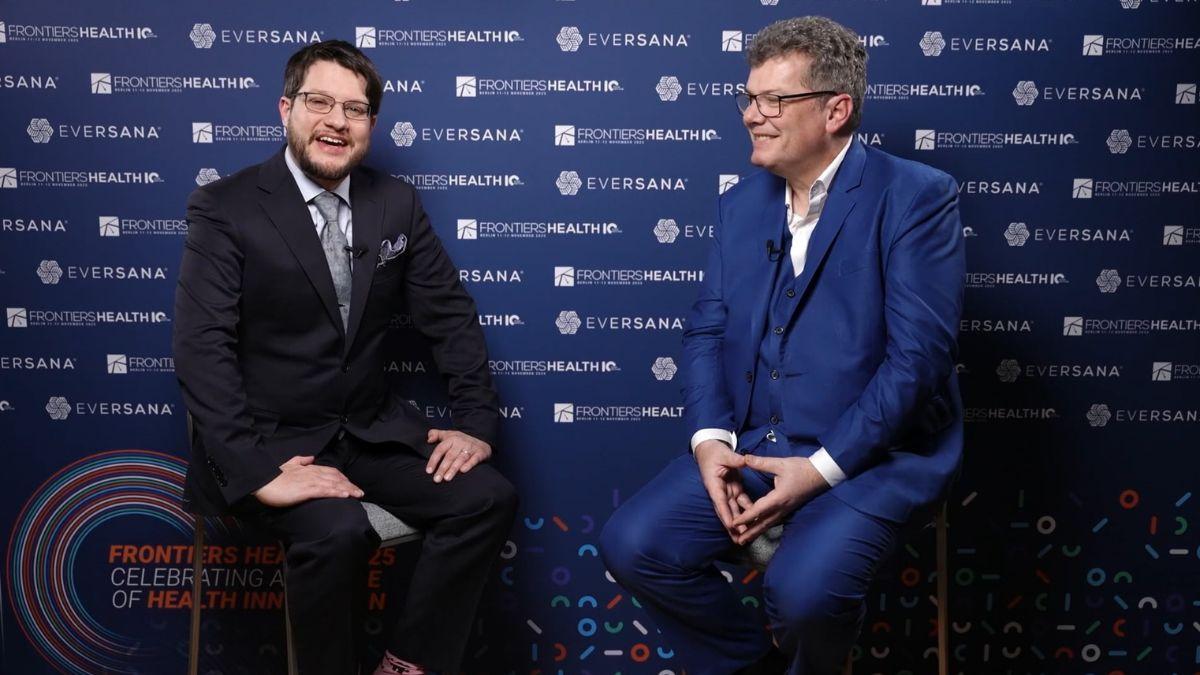VCs upbeat about European life sciences market, despite uncertainty

It has been a curious start to the year for pharma and biotech investment. Sentiment on both sides of the Atlantic was generally positive at the JP Morgan Healthcare Conference in San Francisco in January – lifted by Johnson & Johnson's $14.6bn acquisition of Intra-Cellular Therapies. At the same time Anglo-US start-up Verdiva Bio, which is developing a range of oral and injectable obesity treatments, announced it had raised a whopping $411 million.
But while “JPM” often sets the tone for the year ahead, things haven’t quite turned out that way – so far at least. The threat of tariffs, the uncertainty engendered by Robert F Kennedy Jr’s appointment as the US’ Secretary of Health, the ongoing war in Ukraine – among other factors – have put a dampener on things.
Despite the slow down, an upbeat future outlook
Almost four years after the biotech market peaked in what amounted to a huge post-Covid bubble, some are wondering when the good times will finally start to roll again. A number of Europe’s leading life sciences VCs, though, despite the private market slow down, remain upbeat about the future.
“The biotech financing market, while currently in a cautious phase reminiscent of the early 2000s, is poised for a selective rebound, rather than a prolonged downturn,” said Felice Verduyn-van Weegen, Partner at EQT.
“Even as drug pricing and policy uncertainties continue, many VCs and corporate investors remain focused on promising late-stage assets and high impact, de-risked therapeutics,” Verduyn-van Weegen added. “With a few strong clinical successes, IPO windows can reopen, allowing high quality companies to achieve strong public market debuts.”
Hakan Goker, of M Ventures, was a little more circumspect: “If we can move past the current geopolitical uncertainties affecting the market, we will continue seeing a recalibration, with increasing levels of investment in private biotechs with clear value propositions.”
European biotech investment
Antoine Papiernik, chairman and managing partner of Sofinnova Partners, said, “We are seeing positive signs – though it’s still a challenging environment.”
One of those positive signs has come from Sofinnova itself, which in mid-March announced its Sofinnova Biovelocita II fund had closed after raising €165 million – a sum that exceeded its target. The fund, which invests in European biotechs that are driving cutting-edge innovation, has backing from pharmaceutical companies including Amgen, Bristol Myers Squib, and Pfizer Ventures.
Paperinik went on: “Experienced teams with high value assets are still able to attract pharma interest and raise funds. In our portfolio, we have recently seen Amolyt acquired by AstraZeneca, Shockwave by Johnson & Johnson, and Calliditas by Asahi Kasei – all for over $1 billion.”
So, there are good things happening, although right now it does still seem something of a risk-off environment. VCs, other investors, and pharma partners are all placing their bets selectively – looking more closely than ever at every angle they can to increase their odds of a payoff.
That is being manifest in terms of what areas they are most interested in, as well as in-depth scrutiny of biotechs’ fundamental science and management teams.
'Hot' areas: A broad range
In terms of clinical indication, VCs namechecked a surprisingly broad range of “hot” areas – perhaps pointing to a little more appetite for risk than there has been in the last couple of years.
Goker said there was “renewed interest and activity in neurodegeneration and psychiatry” compared to a year ago, as well as increased activity in infertility plays, while “needless to say” there remains “great excitement” about new obesity drugs.
EQT’s Verduyn-van Weegen also highlighted autoimmune and inflammatory diseases, saying there was “significant funding in immune-modulating biologics, novel antibody approaches, and small molecules”. Verduyn-van Weegen cited Nuvig Therapeutics, which is developing immunomodulatory therapies, having secured a $161 million Series B last December. Even more impressively, monoclonal antibody developer Windward Bio trousered $200 million in its January 2025 Series A.
While oncology has never gone away – it “continues to be the primary focus for biotech VCs,” noted Verduyn-van Weegen – there has been a comparative lull in interest in recent years. But that also appears to be giving way.
“Modalities of interest [within oncology] include T cell-based immunotherapies, ADCs, radiopharmaceuticals, and multi-specific antibodies,” Verduyn-van Weegen continued.
Similarly, Papiernik singled out bi-specific antibodies, saying they were “revolutionising immunology and oncology by targeting two pathways simultaneously, enabling improved efficacy and reduced resistance.” Goker mentioned “next generation cancer vaccines,” which have the potential to provide better outcomes all-round in terms of response rates, efficacy, and durability.
In short, when it comes to disease areas of interest and technologies, investors’ horizons appear to be broadening.
AI and ML part of the trend
Besides those listed above, VCs mentioned RNA-based therapeutics and RNA editing, gene and cell therapy platforms, T-cell engaging and next-generation CAR-Ts, as well as – how could we forget? – AI / ML based approaches.
Goker noted: “We are seeing significant interest not only in drug development platforms, but also in enabling technologies that can speed up drug development processes from target identification all the way to the clinic.”
AI / ML was just one part of this trend, he said. Others included spatial biology analytics, proteomics, and novel biomanufacturing technologies – including those aiming to widen the notorious “bottle neck” in cell therapy production.
If there is good news in terms of VCs being willing to look around a little more, that’s not to underestimate the significant hurdles that remain for biotechs to secure backing today.
Goker warned: “More than before, biotechs need to be razor-sharp when it comes to identifying and communicating the true value-add of their technology or drug offering to VCs. They need to show clear commercial differentiation – regardless of their stage of development.”
He advised: “This may mean that companies need to access more non-dilutive funding, to truly build their datasets, before approaching VCs.”
Verduyn-van Weegen agreed. “Investors want to see that the capital they are putting in is going to generate the right value to drive the company forward. So, biotechs need to be focused and disciplined – and do more with less. For instance, if a firm is working on several projects, management need to select one or two for in-house development and consider partnering the rest.”
In summary, although deal volume is down, there are fewer but larger deal sizes. Life sciences companies that can demonstrate unique value propositions, or show promising early signs of success, can earn investor confidence. Investors are willing to commit larger sums than ever before to companies they believe in.
About the author
 Stephen Adams has been an associate director at Optimum Strategic Communications, a specialist life sciences communications agency, for two years. Prior to that he was a health journalist, spending six years at The Daily Telegraph and then a decade at The Mail on Sunday.
Stephen Adams has been an associate director at Optimum Strategic Communications, a specialist life sciences communications agency, for two years. Prior to that he was a health journalist, spending six years at The Daily Telegraph and then a decade at The Mail on Sunday.












